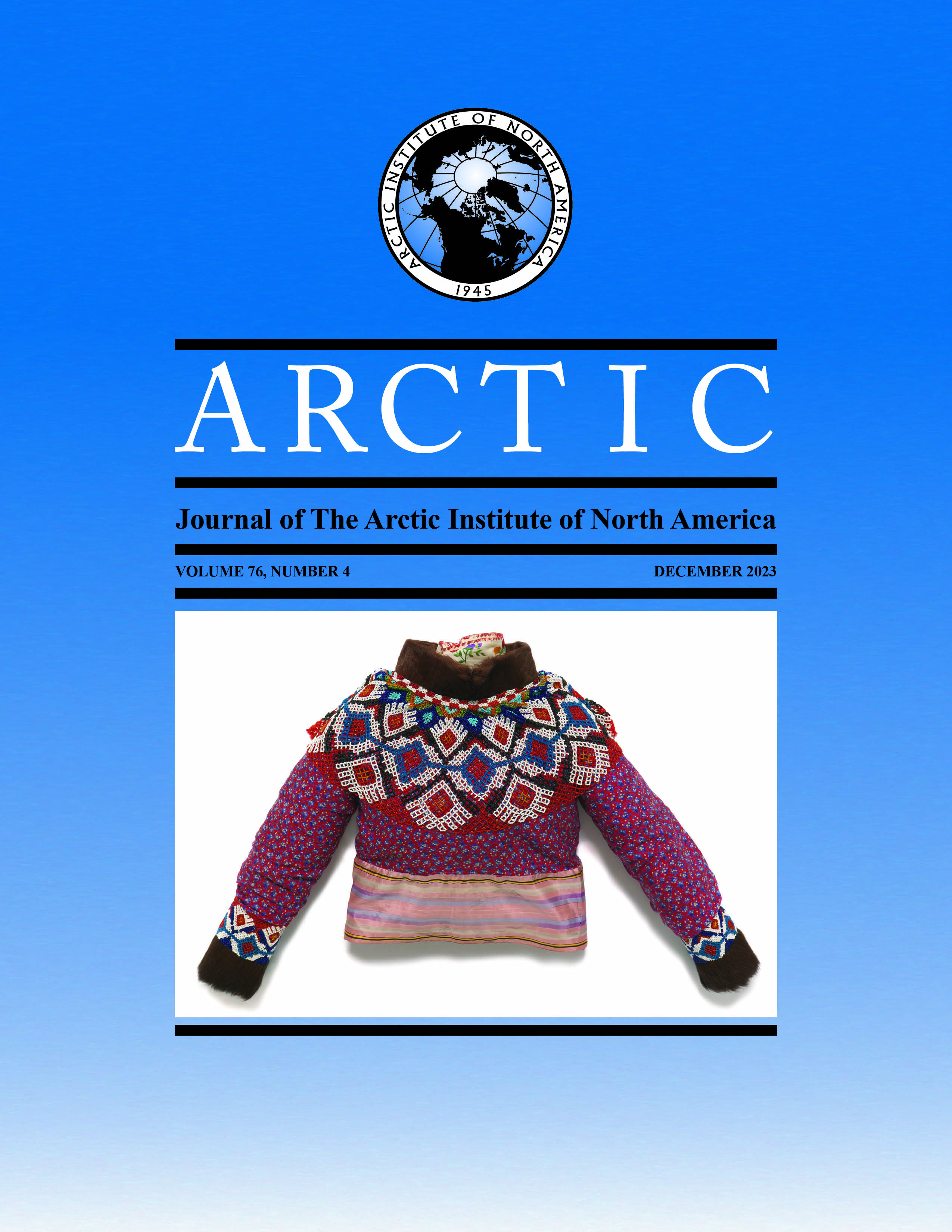Species Identification of Inuit Skin and Fur Clothing: Analyses of DNA, Hair Microscopy, and Macroscopical Identification
DOI:
https://doi.org/10.14430/arctic78938Keywords:
species identification; hair microscopy; macroscopic identification; DNA analysis; hair photomicrographs; Inuit material cultureAbstract
From approximately 1830 to 1940, through various expeditions to Siberia, Arctic North America, and Greenland, and through donations, the National Museum of Denmark acquired its collection of historical Inuit skin clothing. Unfortunately, original provenance information has been lost for 14% of the garments. In order to document the extensive collection, this study investigates three methods for species identification of animal skin: microscopy of hair, macroscopic identification, and DNA validation. Thus, the present study has two aims: first, to optimise and test hair microscopy for species identification by validating identifications by DNA analyses, and second, to use species identification to estimate the geographic and cultural provenance of Inuit skin clothing.
Based on a dataset of well-documented clothing (for positive controls), this study describes an optimised species identification protocol via hair microscopy using transmitted light microscopy (TLM). We demonstrate that the TLM hair protocol is a reliable and inexpensive alternative to molecular approaches when macroscopic identification is doubtful and DNA validation or protein analyses are impossible. In this study we used photomicrographs to document the identifications of caribou (Rangifer tarandus), musk ox (Ovibos moschatus), species of the true seal family (Phocidae), domestic dog (Canis lupus familiaris), wolf (Canis lupus), Arctic fox (Vulpes lagopus), polar bear (Ursus maritimus), wolverine (Gulo gulo), ground squirrel (Urocitellus parryii richardsonii), ermine (Mustela erminea), and cattle (Bos taurus); these identifications can be used for future reference. We conclude that species identification analyses secure the documentation of garments and allow most objects to be contextualized by culture and geography. The studied garments are accessible at the museum website.
Downloads
Downloads
Published
Issue
Section
License
Copyright (c) 2024 ARCTIC

This work is licensed under a Creative Commons Attribution 4.0 International License.


